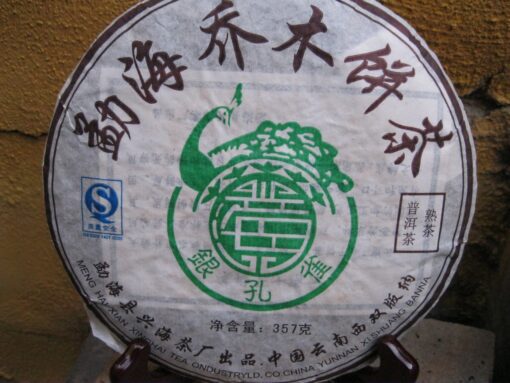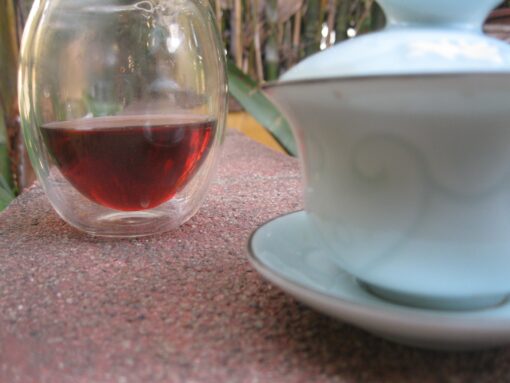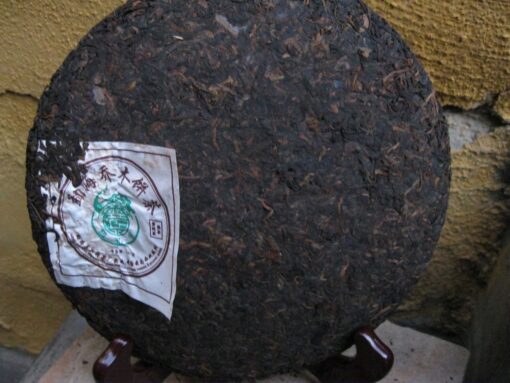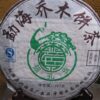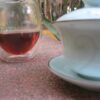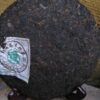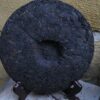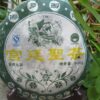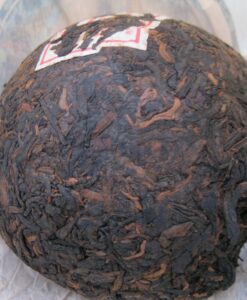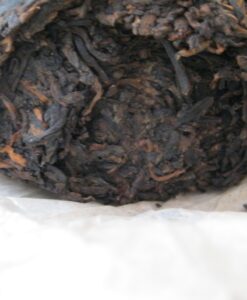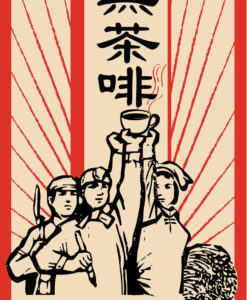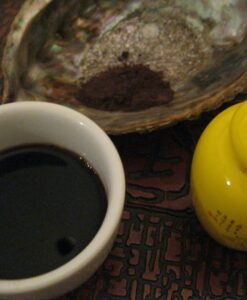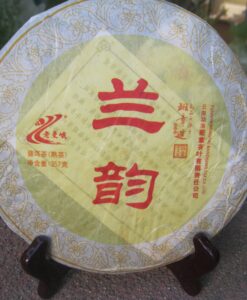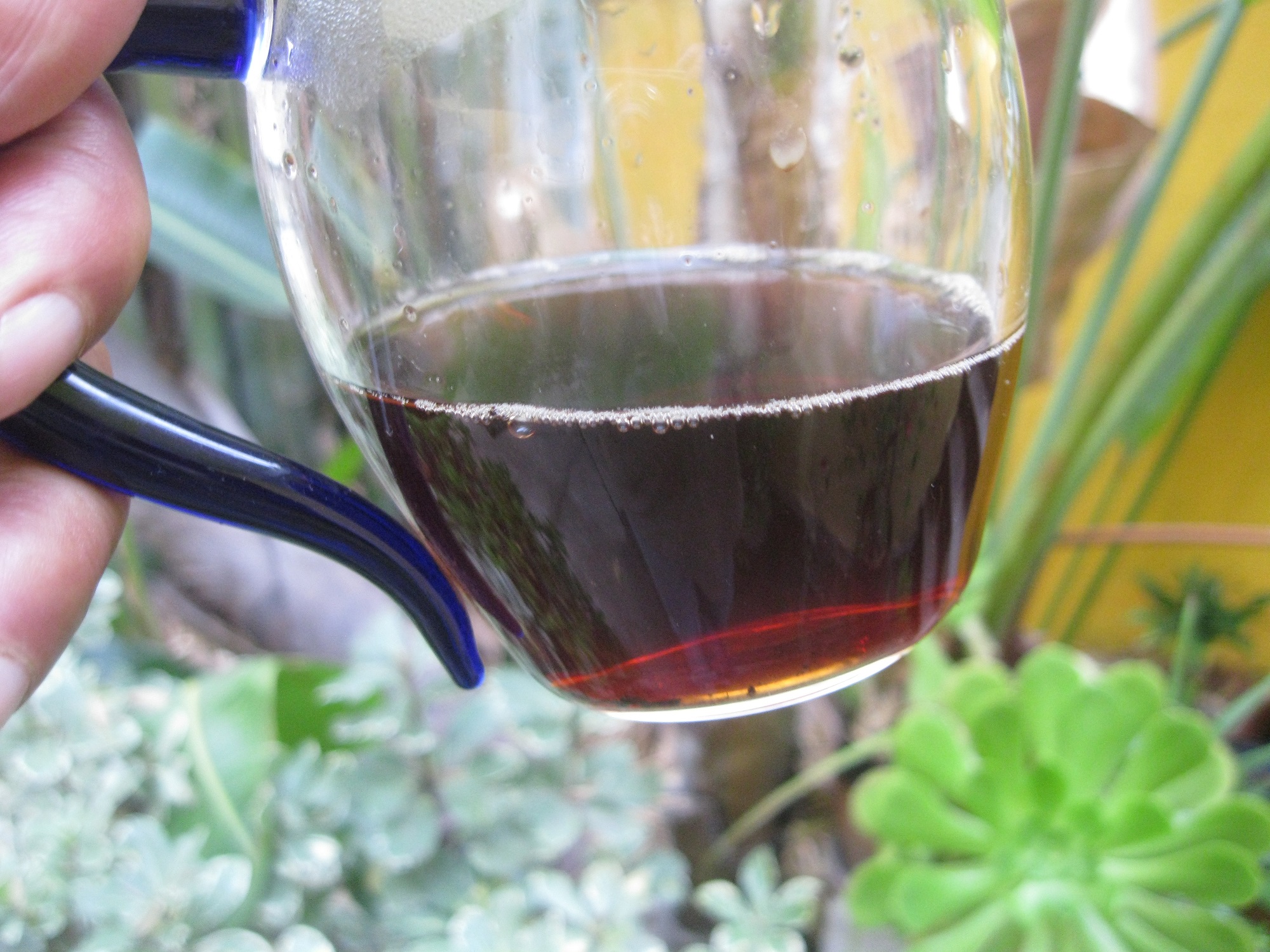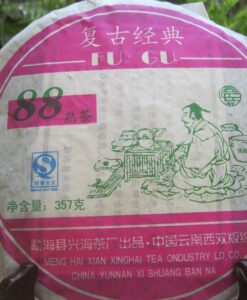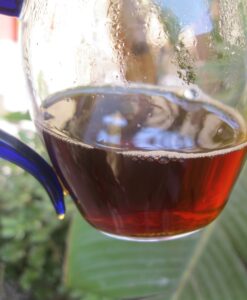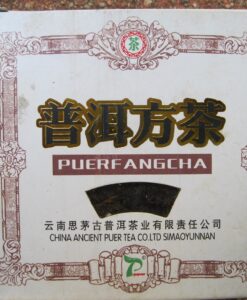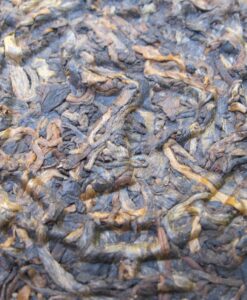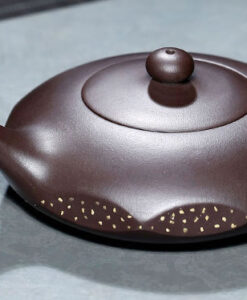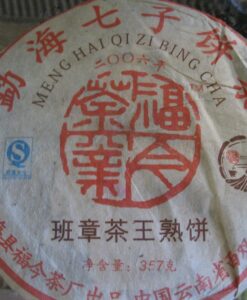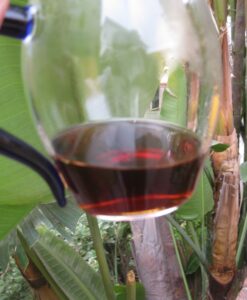Ripe puerh is one of the representative forms of post-fermented tea. Post-fermented puerh consists of a process called “wet piling,” a sophisticated way of saying composting. At over 70% fermentation, a ripe puerh is considered heavily fermented. Under 70% ripes are lightly fermented. Light fermentation retains some of the features of raw tea – such as sweetness and astringency. The tea soup is not as heavy and smooth as fully fermented cooked (ripe) tea, and the color of cashed leaves (yedi) is also lighter. Lightly fermented ripes are conceived with the objective of approximating aged sheng puerh and as such tend to require a few years of storage to sweeten and mellow.
’07 Silver Peacock, Xinghai

The ’07 Silver Peacock Puerh is a sweet and creamy ripe puerh. Characterized by a velvety texture, this treasure yields numerous infusions highlighted by delicious vanilla and a slight mineral note. This Menghai production brews crystal clear and is crafted with aged raws in mind. The texture is light, without any underlying bitterness of thick and heavy productions. Dry stored in Los Angeles since June of ’17.
By some accounts, Xinghai is second only to Dayi in terms of ripe puerh tastiness. Puerh Junky Collection offers bossier XH productions and commissions, such as Merlot, BZ Ripe King, and Operation Macau.
New batch stored since April ’23. 357g. 20g sample.
18¢
’06 T8371, Zhongcha
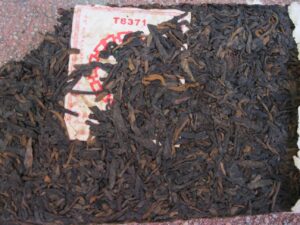
The ’06 T8371 is a ripe brick commissioned by a large Guangdong distributor, indicated by the “T” in the recipe enumeration. This treasure is crafted primarily from grade 7 leaves, a bit smaller from the well-recognized 7581. The differences between the two are noteworthy.
The T8371 has undergone light fermentation, while undergoing Guangdong storage. This produces a ripe in the vein of a well-aged raw puerh of about 25 years old. Conversely, the 7581 has heavier fermentation, and the storage conditions vary widely. Generally, 7581 will be much thicker and sweeter. It is one of the ripe standard bearers, essentially defining the category.
The smaller leaf size and light fermentation in T8371 deliver a greater attack on the tongue and in the throat by virtue of more tannins. It also gives off some cinnamon notes. A similarly aged 7581 will be more velvety and viscous. There’s a good chance of more camphor in a humidly stored production, fruit in those dryly stored.
Guangdong storage tends to be highly coveted by ripe puerh enthusiasts. The T8371 checks that box, while the light fermentation makes it relatively rare. Consistent with Zhongcha’s high standards, the liquor is crystal clear, sparkling like a dark ruby and expressing an unmistakably clean taste. Stored in Los Angeles since ’18. 250g. 20g sample.
30¢
’06 Langhe Tuo
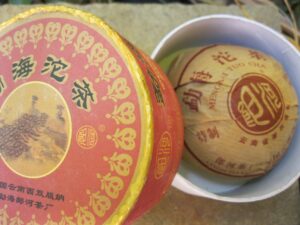
Light camphor, sugar, bbq, lingering essence of a sweet bamboo vinegar. Broth has a definite twang that piques salivary response, along backdrop of smoke and a hint of cinnamon. Sophisticated balance of both savory and sweet. Qi is resolute, arriving early in the second pot, full body and head, first stimulating before relaxation sets in. Broth clarity is second to none.
Langhe Tuo texture is not meant to be heavy consistent with light fermentation style. The taste, on the other hand, is complex, best suited for experienced drinkers or those endeavoring to broaden their drinking horizons. Guangdong stored under climate control or having only spent a short stint there, the Langhe Tuo expresses less camphor and petrichor than resinous wood and wet leather. Stored in Los Angeles since Nov ’21, its smoke expression is a new (as of ’23) and extremely surprising development. 100g.
30¢
’09 Macau Brick
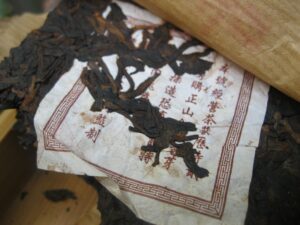
The huigan gives off a dusty petrichor, the sensation of a dusty summer road that gets sprinkled with rain just enough to release that minerally aroma. This combines with a dry wood note, quite similar to the Langhe Ripe Tuo, and hints of cinnamon. At room temp and in deeper infusions, some bitterness comes through, along with a very active mouth sensation that tweaks the cheeks causing the mouth to water and lips to buzz. There has to be some sour to cause salivation of this sort but it’s very difficult to detect beyond the salivation itself.
I did mention a buzz in the lips, but that’s not the only place. The qi is full body just beneath the skin. The whole body buzzes, an effect felt after first going straight to the head by the end of the first infusion. The Macau Brick’s qi can stand toe-to-toe with any other reputed qi offering. Beyond being quite relaxing, the buzz lasts what seems to be longer than most.
Needless to say, the clarity is stupendous. This is not for those who are looking for a heavy mouthfeel. Also, those seeking excessive humidity no humidity at all should steer clear. 250g. 20g sample.
46¢
| Size | Langhe Tuo, Macau Brick, Macau Brick Sample, Silver Peacock, T8371, T8371 Sample |
|---|

